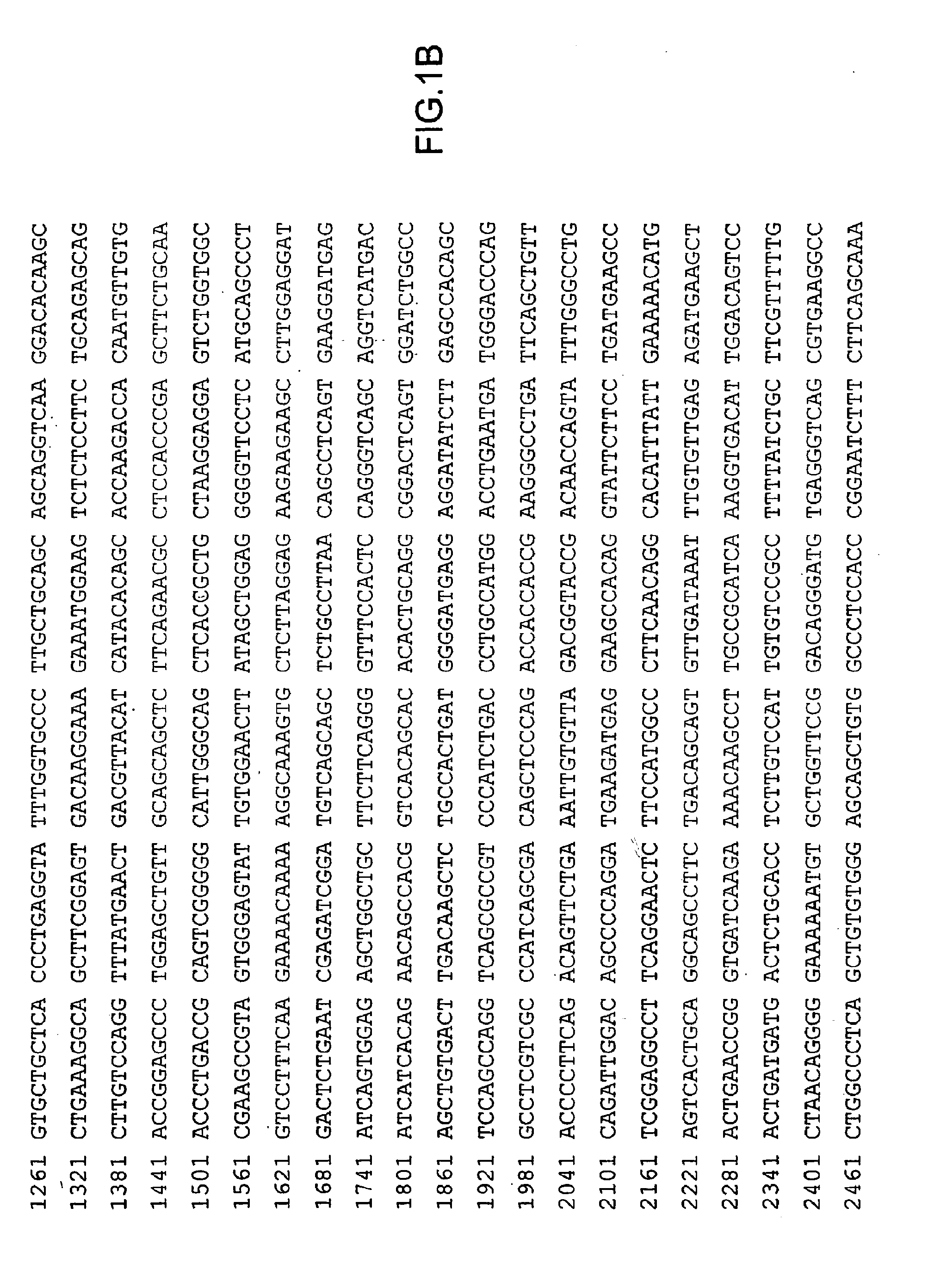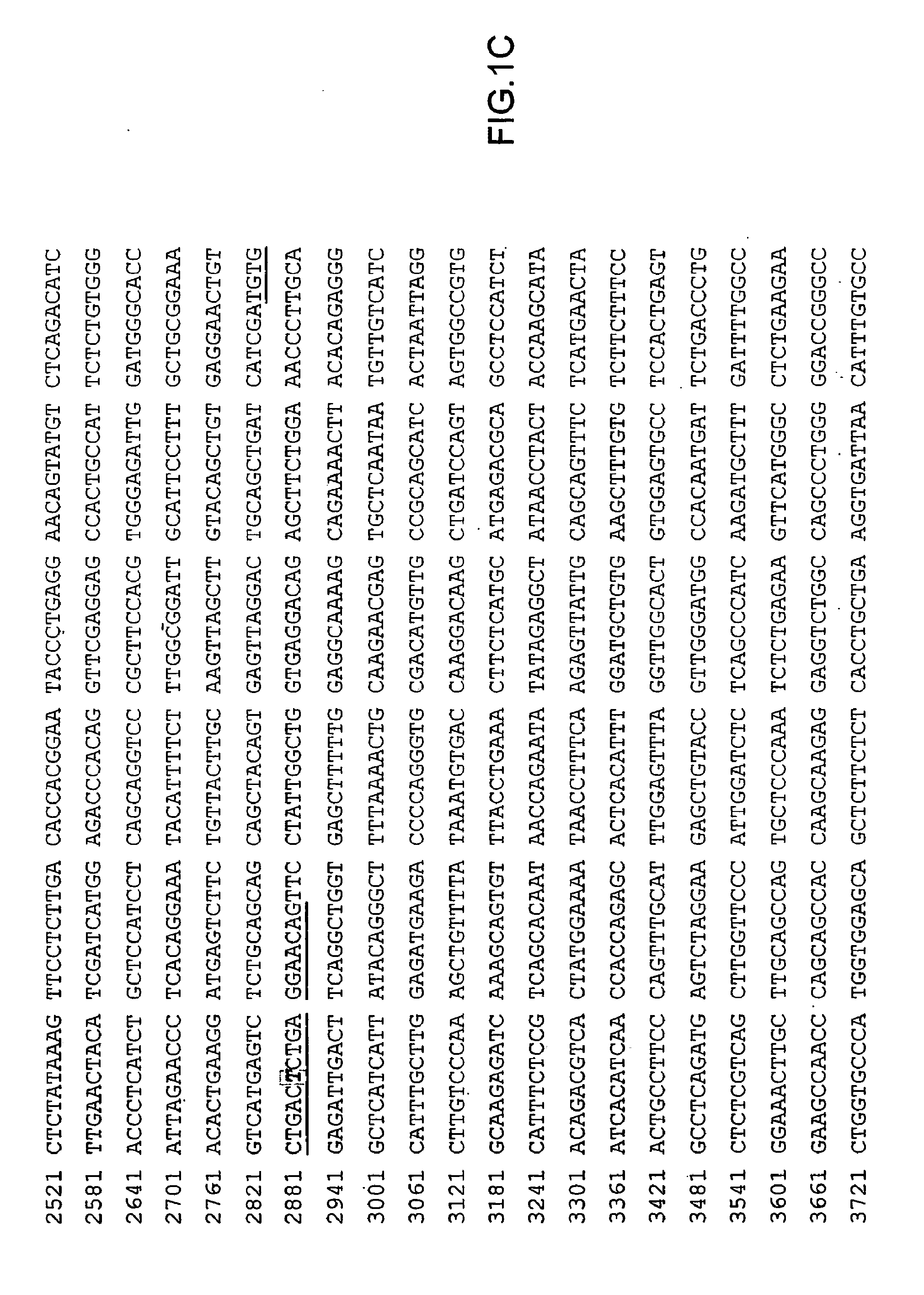RNA interference for the treatment of gain-of-function disorders
a gain-of-function disorder and rna technology, applied in the direction of drug compositions, artificial cell constructs, active genetic ingredients, etc., can solve the problems of rnai against the expanded cag repeat region having potential complications, sirnas targeting these cag repeats cannot be used, and risk the widespread destruction of normal cag repeat-containing mrnas, etc., to achieve enhanced nuclease resistance
- Summary
- Abstract
- Description
- Claims
- Application Information
AI Technical Summary
Benefits of technology
Problems solved by technology
Method used
Image
Examples
examples
[0276]Unlike other types of autosomal dominant diseases, Huntington's disease does not contain a point mutation e.g., a single nucleotide change. Therefore, the strategy to design siRNA directed against a point mutation in the disease allele cannot be implemented. Instead, the present invention directs designed siRNAs against polymorphisms in the Huntingtin gene, of which there are about 30 available in GenBank. The present invention also identifies the polymorphism in the Huntington disease allele which differs from the wild type allele, so that siRNA destroys only the disease mRNA and leaves intact the wild type (normal) allele mRNA. Thus, only the mutant Huntingtin protein is destroyed and the normal protein is intact.
example i
Testing of RNAi Agents (e.g., siRNAs) Against Mutant Htt in Drosophila Lysates
[0277]A siRNA targeting position 2886 in the htt mRNA was designed as described supra. The sequence of the siRNA is depicted in FIG. 5a (SEQ ID NO:24 sense; 25 anti-sense). Synthetic RNA (Dharmacon) was deprotected according to the manufacturer's protocol. siRNA strands were annealed (Elbashir et al., 2001a).
[0278]Target RNAs were prepared as follows. Target RNAs were transcribed with recombinant, histidine-tagged, T7 RNA polymerase from PCR products as described (Nykänen et al., 2001; Hutvágner et al., 2002). PCR templates for htt sense and anti-sense were generated by amplifying 0.1 ng / ml (final concentration) plasmid template encoding htt cDNA using the following primer pairs: htt sense target, 5′-GCG TAA TAC GAC TCA CTA TAG GAA CAG TAT GTCTCA GAC ATC-3′ (SEQ ID NO:30) and 5′-UUCG AAG UAU UCC GCG UAC GU-3′ (SEQ ID NO:31); htt anti-sense target, 5′-GCG TAA TAC GAC TCA CTA TAG GAC AAG CCT AAT TAG TGA TGC-...
example ii
RNAi Knockdown of Htt Protein in Cultured Cells
[0282]In a first experiment, siRNAs targeting a polymorphism in the htt mRNA (i.e., the polymorphism at position 2886 in the htt mRNA) were tested for their ability to down-regulate endogenous Htt protein in HeLa cells. HeLa cells were cultures and transfected as follows. HeLa cells were maintained at 37° C. in Dulbecco's modified Eagle's medium (DMEM, Invitrogen) supplemented with 10% fetal bovine serum (FBS), 100 unit / ml penicillin and 100 μg / ml streptomycin (Invitrogen). Cells were regularly passaged at sub-confluence and plated at 70% confluency 16 hours before transfection. Lipofectamine™ (Invitrogen)-mediated transient transfection of siRNAs were performed in duplicate 6-well plates (Falcon) as described for adherent cell lines by the manufacturer. A standard transfection mixture containing 100-150 nM siRNA and 9-10 μl Lipofectamine™ in 1 ml serum-reduced OPTI-MEM® (Invitrogen) was added to each well. Cells were incubated in trans...
PUM
| Property | Measurement | Unit |
|---|---|---|
| pH | aaaaa | aaaaa |
| pH | aaaaa | aaaaa |
| Tm | aaaaa | aaaaa |
Abstract
Description
Claims
Application Information
 Login to View More
Login to View More - R&D
- Intellectual Property
- Life Sciences
- Materials
- Tech Scout
- Unparalleled Data Quality
- Higher Quality Content
- 60% Fewer Hallucinations
Browse by: Latest US Patents, China's latest patents, Technical Efficacy Thesaurus, Application Domain, Technology Topic, Popular Technical Reports.
© 2025 PatSnap. All rights reserved.Legal|Privacy policy|Modern Slavery Act Transparency Statement|Sitemap|About US| Contact US: help@patsnap.com



